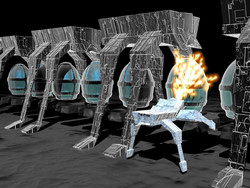Sizes shrink in micro-manufacturing
Manual assembly of microelectromechanical systems (MEMS) components is cost prohibitive. The level of precision required for an operator assembling miniature parts under a microscope is also too high due to eye strain and dexterity limitations. Initiated to investigate the automated assembly of MEMS, the EU-funded NET4M (Development of a collaborative network for micro -manufacturing, -assembly and -robotics) project developed technologies for a robotic workcell. NET4M scientists worked on inspection of microparts, measurement of micro- and nano-forces and micro-assembly using both theoretical and experimental methods. They conducted highly interdisciplinary research, ranging from mechatronics to automation methods. Different approaches were investigated based on innovative applications of micro-scale physics and advanced automation algorithms. The team also conducted specific research on modelling and design, as well as precision manufacturing at the meso and micro scale, covering micro electro discharge machining, micro milling, and micro/nano fabrication. It made significant progress regarding automatic handling and assembly of micro parts, as well as with respect to actuation and sensing. Tools and methodologies for mechanical and dynamic characterisation of micro components and devices were also elaborated. This led to the designing a new generation of robotic devices for positioning and fitting parts up to 100 micrometres in size, yielding cost-effective assembly with shorter development cycle times. The progress achieved facilitates the development of increasingly smaller and more complex micro-machines. One possible application involves integrating mechanical and optical components in addition to electronic ones into prototypes of new micro-machines. Beyond micro-manufacturing, robotic micromanipulation could have potential applications in microbiology and microsurgery. Once the basic platform was demonstrated, the NET4M researchers looked into transferring this technology out of the lab and into the marketplace. They contributed to strengthening an international network of Research Laboratories in micro-manufacturing, supported by synergic and interdisciplinary skills. The two joint workshops organised during the project in Italy and the US have successfully disseminated the project’s achievements among the scientific community and to relevant stakeholders.







